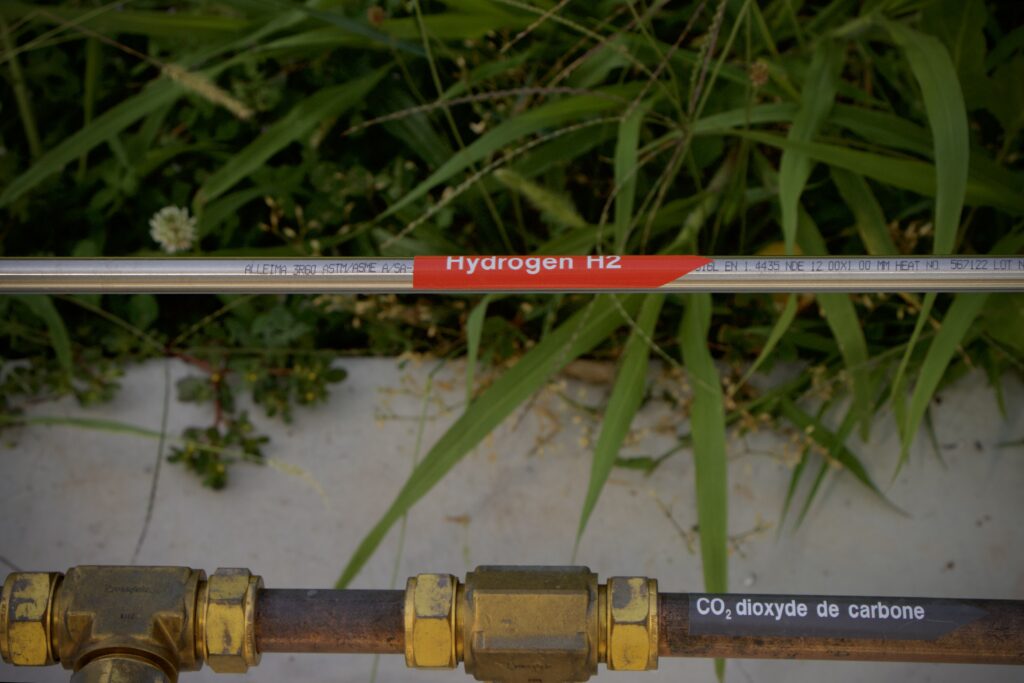Hydrogen gas (molecular formula H₂) is the simplest and lightest element in the periodic table. It has unique physical and technical properties. As the most frequent element in the universe, it plays a role in countless applications, research fields, and phenomena.
Physical properties #
The molecular mass of hydrogen gas is 2.016 g/mole. At room temperature, the gas is colorless, odorless, and tasteless. The density is about 0.08988 gH2/L at 0 °C and 1 atm, making it the least dense of all gases. The phase transitions are at -252.87°C (20.28 K) and -259.14°C (14.01 K), respectively. It is slightly soluble in water and other solvents.
Technical properties #
Hydrogen is highly flammable and can form explosive mixtures with air. The flammability range is 4% to 75% hydrogen in air and the autoignition temperature is about 500°C (932°F). It is important to distinguish the flammability range from the explosion limits which are in a smaller range. Hydrogen has high thermal conductivity (0.1805 W/m·K at 300 K), making it useful as a coolant in high-performance applications like power generators and nuclear reactors. Another special feature of hydrogen it its high specific energy (energy per unit mass) of about 142 MJ/kg. This is more than double that of conventional hydrocarbon fuels. The gas diffuses rapidly, with a diffusivity in air of approximately 0.61 cm²/s at room temperature. These properties are important for its behavior in storage and transport applications. The technical properties of hydrogen determine how it can be handled safely. This topic is described in greater detail in this article.
Hydrogen gas as an energy carrier #
The gas may play a vital role in the transition to a renewable and environmentally friendly energy system that does not rely on fossil fuels, the energy transition. The main reason for this is that hydrogen using renewable electricity and water with a process called electrolysis. This article summarizes certain available and developing electrolysis technologies.






